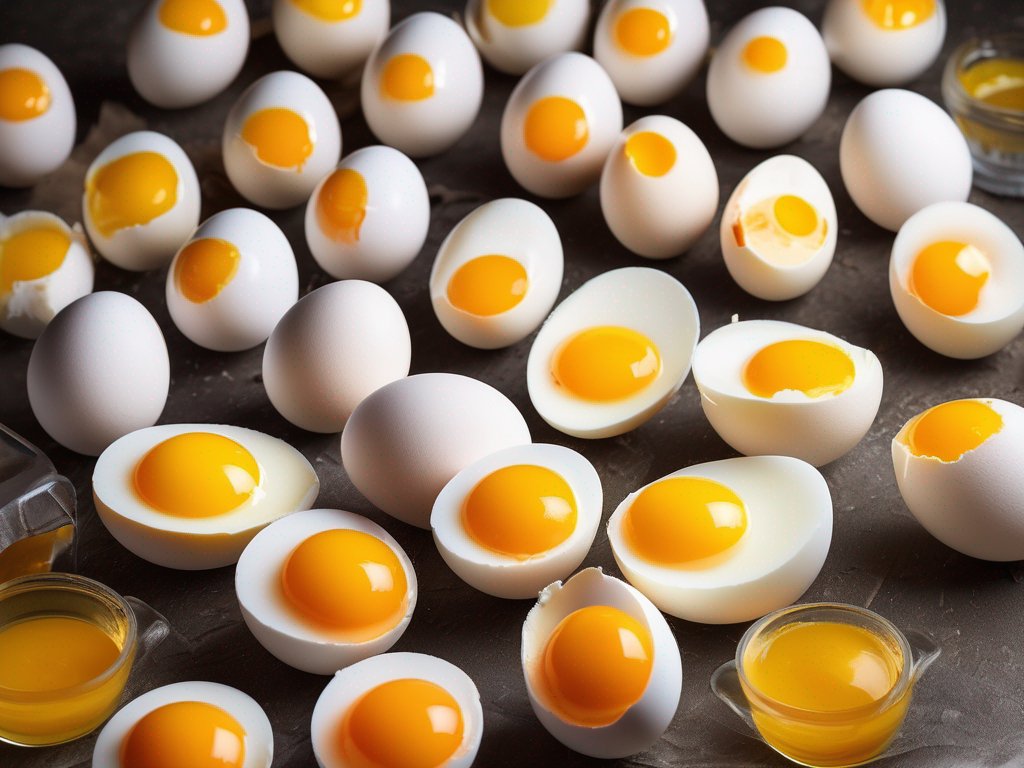
Safely Storing Leftover Egg Yolks Fresh Raw
Get Your Free Food Safety Cheat Sheet
30 most common foods with instant answers. Print it and stick it on your fridge—completely free!
Safely Storing Leftover Egg Yolks Fresh Raw
In the culinary world, egg yolks are a versatile ingredient that adds richness and flavor to many dishes. However, when a recipe calls for only egg whites or when you have leftover yolks after separating eggs, it's essential to know how to store them properly to maintain their freshness and safety for later use. In this blog post, we will discuss practical tips and safety information on how to safely store leftover egg yolks fresh raw. (Egg yolks fresh raw)
Why Proper Storage is Important
Before diving into the specifics of storing egg yolks, let's understand why proper storage is crucial:
- Prevents bacterial growth: Raw egg yolks are a breeding ground for bacteria, which can lead to foodborne illnesses if not stored correctly.
- Maintains quality: Proper storage helps retain the texture, flavor, and nutritional value of the egg yolks.
- Reduces waste: By storing egg yolks properly, you can use them in future recipes, minimizing food waste.
Storing Egg Yolks Fresh Raw
1. Separating the Yolks
Before storing leftover egg yolks, ensure that you separate them from the whites carefully. You can use an egg separator or gently transfer the yolk back and forth between the shell halves, allowing the whites to drip off.
2. Choosing the Right Container
Select a clean and airtight container for storing the egg yolks. Glass or plastic containers with tight-fitting lids work well. Avoid using containers that are not food-safe or may impart odors or flavors to the yolks.
3. Adding a Preservative
To prevent the yolks from drying out or developing an off-flavor, consider adding a preservative like salt or sugar. For every four yolks, mix in either 1/8 teaspoon of salt or 1 1/2 teaspoons of sugar before storing.
4. Proper Storage Conditions
Store the egg yolks in the refrigerator at a temperature below 40°F (4°C). Make sure the container is placed in the coldest part of the fridge, away from raw meat, poultry, or seafood to avoid cross-contamination.
5. Labeling and Dating
To track the freshness of the egg yolks, label the container with the date of storage. Use the yolks within 2-4 days for optimal quality and safety.
6. Freezing Egg Yolks
If you don't plan to use the yolks within a few days, consider freezing them for longer storage. To freeze raw egg yolks, you can:
- Add a small amount of salt or sugar as a preservative.
- Gently whisk the yolks to blend them before freezing.
- Portion the yolks into an ice cube tray or a silicone mold for easy thawing.
7. Thawing and Using Frozen Yolks
When ready to use frozen egg yolks, transfer them to the refrigerator to thaw overnight. Avoid thawing at room temperature to prevent bacterial growth. Use the yolks in recipes as you would fresh ones.
Conclusion
Properly storing leftover egg yolks fresh raw is essential for maintaining their quality and safety. By following the tips outlined in this blog post, you can ensure that your egg yolks stay fresh and ready for use in various recipes. Remember to prioritize food safety practices to enjoy delicious dishes without compromising your health. [egg yolks fresh raw](/food/egg yolks fresh raw) (Egg yolks fresh raw)
Related Posts
Here are some other articles you might find helpful:
Authoritative Food Safety References
These agencies and university labs inform every tip and health precaution we publish.
USDA FoodKeeper – Cold Storage Guidelines
Official refrigerator, freezer, and pantry timelines maintained by the U.S. Department of Agriculture.
Visit USDA FoodKeeperFDA Produce Safety Rule & Grower Guidance
Field-to-fridge handling practices that prevent contamination of fruits, vegetables, and leafy greens.
Visit FDA Produce SafetyCDC Foodborne Illness Prevention Hub
Surveillance-backed guidance on pathogens, symptoms, and steps to reduce foodborne illness risk.
Visit CDC Food SafetyUC Davis Postharvest Technology Center
University research detailing optimal storage atmospheres for produce after harvest.
Visit UC Davis PostharvestPenn State Extension – Home Food Preservation & Safety
Peer-reviewed extension bulletins on safe canning, chilling, and reheating practices.
Visit Penn State ExtensionGet Your Free Food Safety Cheat Sheet
30 most common foods with instant answers. Print it and stick it on your fridge—completely free! Want more? Upgrade to the complete guide with 70+ foods.
Scan your food directly and get instant safety info using our AI-powered camera feature.